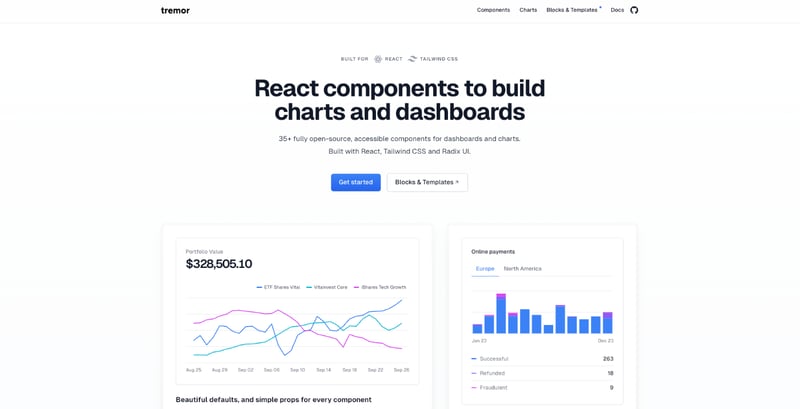Mongoose with NestJS and MongoDB: A Complete Guide || By Munisekhar Udavalapati
Introduction Mongoose is an Object Data Modeling (ODM) library for MongoDB and Node.js. It provides schema validation, middleware, and built-in query-building methods. In this guide, we will integrate Mongoose with NestJS to create a structured and scalable backend application using MongoDB. Prerequisites Basic knowledge of TypeScript and NestJS Installed Node.js and NestJS CLI A running instance of MongoDB (local or cloud-based) Installing Dependencies To use Mongoose with NestJS, install the required packages: npm install @nestjs/mongoose mongoose For TypeScript types: npm install -D @types/mongoose Setting Up Mongoose in NestJS NestJS provides MongooseModule to manage MongoDB connections. Add it to the root module: import { Module } from '@nestjs/common'; import { MongooseModule } from '@nestjs/mongoose'; @Module({ imports: [MongooseModule.forRoot('mongodb://localhost:27017/nestjs-app', { useNewUrlParser: true, useUnifiedTopology: true, })], }) export class AppModule {} Understanding Mongoose Concepts 1. Schema Defines the structure of documents in a collection. 2. Model A wrapper for the schema that allows interacting with the database. 3. Document An instance of a model that represents a single record. 4. Middleware Functions that execute before or after certain actions (e.g., saving a document). 5. Virtuals Computed properties that are not stored in the database. 6. Hooks Functions that run before or after certain Mongoose operations (e.g., pre-save, post-save). Creating a Mongoose Schema and Model Define a schema using decorators with @nestjs/mongoose. import { Prop, Schema, SchemaFactory } from '@nestjs/mongoose'; import { Document } from 'mongoose'; @Schema({ timestamps: true }) export class User extends Document { @Prop({ required: true }) name: string; @Prop({ unique: true, required: true }) email: string; @Prop({ default: Date.now }) createdAt: Date; } export const UserSchema = SchemaFactory.createForClass(User); Adding Middleware (Hooks) Middleware functions allow executing logic before or after certain events like saving a document. UserSchema.pre('save', function(next) { console.log('User is being saved:', this); next(); }); Defining Virtuals Virtuals allow creating computed properties that do not get stored in MongoDB. UserSchema.virtual('fullName').get(function() { return `${this.firstName} ${this.lastName}`; }); Registering the Schema in the Module To use the schema, register it in a module: import { Module } from '@nestjs/common'; import { MongooseModule } from '@nestjs/mongoose'; import { User, UserSchema } from './user.schema'; import { UserService } from './user.service'; import { UserController } from './user.controller'; @Module({ imports: [MongooseModule.forFeature([{ name: User.name, schema: UserSchema }])], controllers: [UserController], providers: [UserService], }) export class UserModule {} Creating a Service for Database Operations import { Injectable } from '@nestjs/common'; import { InjectModel } from '@nestjs/mongoose'; import { Model } from 'mongoose'; import { User } from './user.schema'; @Injectable() export class UserService { constructor(@InjectModel(User.name) private userModel: Model) {} async createUser(name: string, email: string): Promise { const newUser = new this.userModel({ name, email }); return newUser.save(); } } Querying with Mongoose Find all users: async getUsers(): Promise { return this.userModel.find().exec(); } Find by ID: async getUserById(id: string): Promise { return this.userModel.findById(id).exec(); } Select Specific Fields: async getUserByEmail(email: string): Promise { return this.userModel.findOne({ email }).select('name email').exec(); } Using Indexes for Performance Optimization UserSchema.index({ email: 1 }); Find with Filtering: async getUsersByCreatedDate(date: Date): Promise { return this.userModel.find({ createdAt: { $gte: date } }).exec(); } Sorting Results: async getUsersSorted(): Promise { return this.userModel.find().sort({ name: 1 }).exec(); } Pagination with Limit & Skip: async getUsersPaginated(page: number, limit: number): Promise { return this.userModel.find().skip((page - 1) * limit).limit(limit).exec(); } Transactions in MongoDB To ensure atomic operations, use MongoDB transactions: const session = await this.userModel.db.startSession(); session.startTransaction(); try { const user = new this.userModel({ name, email }); await user.save({ session }); await session.commitTransaction(); } catch (error) { await session.abortTransaction();

Introduction
Mongoose is an Object Data Modeling (ODM) library for MongoDB and Node.js. It provides schema validation, middleware, and built-in query-building methods. In this guide, we will integrate Mongoose with NestJS to create a structured and scalable backend application using MongoDB.
Prerequisites
- Basic knowledge of TypeScript and NestJS
- Installed Node.js and NestJS CLI
- A running instance of MongoDB (local or cloud-based)
Installing Dependencies
To use Mongoose with NestJS, install the required packages:
npm install @nestjs/mongoose mongoose
For TypeScript types:
npm install -D @types/mongoose
Setting Up Mongoose in NestJS
NestJS provides MongooseModule to manage MongoDB connections. Add it to the root module:
import { Module } from '@nestjs/common';
import { MongooseModule } from '@nestjs/mongoose';
@Module({
imports: [MongooseModule.forRoot('mongodb://localhost:27017/nestjs-app', {
useNewUrlParser: true,
useUnifiedTopology: true,
})],
})
export class AppModule {}
Understanding Mongoose Concepts
1. Schema
Defines the structure of documents in a collection.
2. Model
A wrapper for the schema that allows interacting with the database.
3. Document
An instance of a model that represents a single record.
4. Middleware
Functions that execute before or after certain actions (e.g., saving a document).
5. Virtuals
Computed properties that are not stored in the database.
6. Hooks
Functions that run before or after certain Mongoose operations (e.g., pre-save, post-save).
Creating a Mongoose Schema and Model
Define a schema using decorators with @nestjs/mongoose.
import { Prop, Schema, SchemaFactory } from '@nestjs/mongoose';
import { Document } from 'mongoose';
@Schema({ timestamps: true })
export class User extends Document {
@Prop({ required: true })
name: string;
@Prop({ unique: true, required: true })
email: string;
@Prop({ default: Date.now })
createdAt: Date;
}
export const UserSchema = SchemaFactory.createForClass(User);
Adding Middleware (Hooks)
Middleware functions allow executing logic before or after certain events like saving a document.
UserSchema.pre('save', function(next) {
console.log('User is being saved:', this);
next();
});
Defining Virtuals
Virtuals allow creating computed properties that do not get stored in MongoDB.
UserSchema.virtual('fullName').get(function() {
return `${this.firstName} ${this.lastName}`;
});
Registering the Schema in the Module
To use the schema, register it in a module:
import { Module } from '@nestjs/common';
import { MongooseModule } from '@nestjs/mongoose';
import { User, UserSchema } from './user.schema';
import { UserService } from './user.service';
import { UserController } from './user.controller';
@Module({
imports: [MongooseModule.forFeature([{ name: User.name, schema: UserSchema }])],
controllers: [UserController],
providers: [UserService],
})
export class UserModule {}
Creating a Service for Database Operations
import { Injectable } from '@nestjs/common';
import { InjectModel } from '@nestjs/mongoose';
import { Model } from 'mongoose';
import { User } from './user.schema';
@Injectable()
export class UserService {
constructor(@InjectModel(User.name) private userModel: Model<User>) {}
async createUser(name: string, email: string): Promise<User> {
const newUser = new this.userModel({ name, email });
return newUser.save();
}
}
Querying with Mongoose
Find all users:
async getUsers(): Promise<User[]> {
return this.userModel.find().exec();
}
Find by ID:
async getUserById(id: string): Promise<User> {
return this.userModel.findById(id).exec();
}
Select Specific Fields:
async getUserByEmail(email: string): Promise<User> {
return this.userModel.findOne({ email }).select('name email').exec();
}
Using Indexes for Performance Optimization
UserSchema.index({ email: 1 });
Find with Filtering:
async getUsersByCreatedDate(date: Date): Promise<User[]> {
return this.userModel.find({ createdAt: { $gte: date } }).exec();
}
Sorting Results:
async getUsersSorted(): Promise<User[]> {
return this.userModel.find().sort({ name: 1 }).exec();
}
Pagination with Limit & Skip:
async getUsersPaginated(page: number, limit: number): Promise<User[]> {
return this.userModel.find().skip((page - 1) * limit).limit(limit).exec();
}
Transactions in MongoDB
To ensure atomic operations, use MongoDB transactions:
const session = await this.userModel.db.startSession();
session.startTransaction();
try {
const user = new this.userModel({ name, email });
await user.save({ session });
await session.commitTransaction();
} catch (error) {
await session.abortTransaction();
} finally {
session.endSession();
}
Best Practices
- Use DTOs for validation and request handling
- Enable indexes for better query performance
- Use MongoDB Transactions for atomic operations
- Implement middleware for logging and error handling
- Keep schema definitions clean and structured
- Use
.select()to fetch only necessary fields for efficiency - Use
.sort(),.skip(), and.limit()for better data retrieval management
Conclusion
This guide covers setting up Mongoose with NestJS, defining schemas, implementing CRUD operations, handling transactions, indexing, filtering, and best practices. With this foundation, you can build powerful and optimized applications using NestJS and MongoDB.










































































































































































![[The AI Show Episode 142]: ChatGPT’s New Image Generator, Studio Ghibli Craze and Backlash, Gemini 2.5, OpenAI Academy, 4o Updates, Vibe Marketing & xAI Acquires X](https://www.marketingaiinstitute.com/hubfs/ep%20142%20cover.png)



























































































































![[FREE EBOOKS] The Kubernetes Bible, The Ultimate Linux Shell Scripting Guide & Four More Best Selling Titles](https://www.javacodegeeks.com/wp-content/uploads/2012/12/jcg-logo.jpg)



![From drop-out to software architect with Jason Lengstorf [Podcast #167]](https://cdn.hashnode.com/res/hashnode/image/upload/v1743796461357/f3d19cd7-e6f5-4d7c-8bfc-eb974bc8da68.png?#)






































































































.png?#)




.jpg?#)
































_Christophe_Coat_Alamy.jpg?#)







































































































![Rapidus in Talks With Apple as It Accelerates Toward 2nm Chip Production [Report]](https://www.iclarified.com/images/news/96937/96937/96937-640.jpg)









































































































































